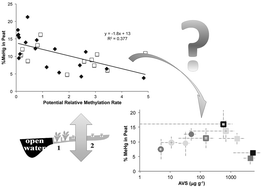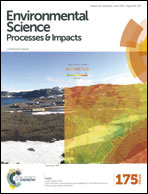Methylmercury production in a chronically sulfate-impacted sub-boreal wetland
Abstract
Increased deposition of atmospheric sulfate exacerbates methylmercury (MeHg) production in freshwater wetlands by stimulating methylating bacteria, but it is unclear how methylation in sub-boreal wetlands is impacted by chronically elevated sulfate inputs, such as through mine discharges. The purpose of our study is to determine how sulfate discharges to wetlands from iron mining activities impact MeHg production. In this study, we compare spatial and temporal patterns in MeHg and associated geochemistry in two wetlands receiving contrasting loads of sulfate. Two orders of magnitude less sulfate in the un-impacted wetland create significant differences in acid-volatile sulfide and porewater sulfide; however, dissolved and solid-phase MeHg concentrations and methylation rate potentials (Kmeth) are statistically similar in both wetlands. Permitted mine pumping events flood the sulfate-impacted wetland with very high sulfate waters during the fall. In contrast to observations in sulfate-limited systems, this large input of sulfate to a chronically sulfate-impacted system led to significantly lower potential relative methylation rates, suggesting a predominance of demethylation processes over methylation processes during the sulfate loading. Overall, short-term measurements of methylation and demethylation potential are unrelated to gross measures of long-term MeHg accumulation, indicating a decoupling of short- and long-term process measurements and an overall disequilibrium in the systems. High sulfide accumulation, above ∼600–800 μg l−1 sulfide, in the sulfate-impacted system lowers long-term MeHg accumulation, perhaps as a result of less bioavailable Hg–S complexes. Although continued research is required to determine how sulfate-limited freshwater wetlands might respond to new, large inputs of high-sulfate runoff from mining operations, chronically impacted wetlands do not appear to continually accumulate or produce MeHg at rates different from wetlands unimpacted by mining.


 Please wait while we load your content...
Please wait while we load your content...